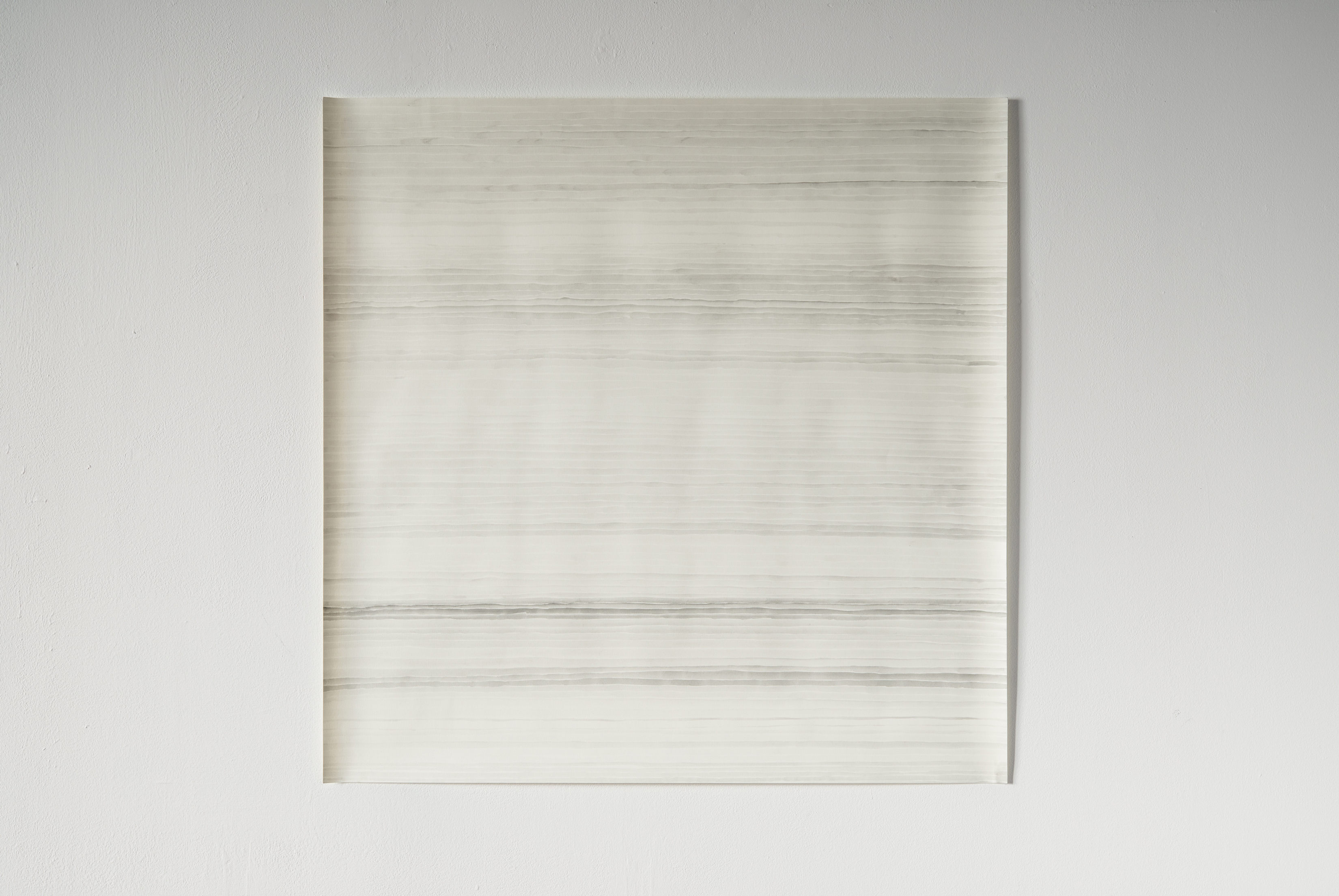Things that Reside in A Line
text by
Hanae Nakao
EN / JP

Tracing an object
Reflecting shapes and forms of objects
The sun shining above all things, its light and shadow
A grey-color gradation projected onto the white wall of a small apartment in the urban environment reveals the tracking of the sun. The subtle graded effect, formed in relation to the shape of the room, size and orientation of the windows, space between the curtains, adjacent buildings and movement of the clouds, is not a reflection of the shapes and forms of objects; rather, it is an embodiment of both the sunlight and shade. The trace of the sun as it reaches the earth records rich nuances of its subtle transition. This releases us from our social roles and reminds us of our existence in nature with its infinite beauty, which is perceptible even in urban apartment rooms.
Shindo reflects on things that are lost in the process of ‘reflecting/tracing/transferring.’ That is, she reveals numerous small narratives which are often obscured in larger stories. Only by staring intently, can you perceive this subtle colorful gradation that exists in small, minute things. Along with this, Shindo has been working for a long time to capture ‘something immanent that resides in landscapes and spaces.’ These are not separate ventures; they are interrelated and thus create invisible layers and minute gradations, and sometimes disparities.
This interest in things lost in-between, untranslatability and something immanent that resides in things has led the artist to find expression in white gaps made by drawing black lines on white paper, and grey tonalities (not black, not white). She seems to have discovered “a ‘shimmer’[1] that implies〈colorless colors〉with infinite nuance, monochrome tonality, and neutralized state or space” in gradations of sumi ink giving the effect of light and shade. Her work also raises a question: how drawings become shadows? In these works, made by drawing lines, thus lacking objects of creation, various dichotomies are overcome and what is shown to us is an infinite scale of shading that exists in-between. This invites us to enter a world of formlessness, which creates a sensation of being absorbed by a larger entity such as motherhood or life. The artist’s interest in shade, while light is essential to life, suggests that she sees vivid existence in the silence of nuanced shadows.
Shindo has pursued various themes flying around the world, motivated by her vigorous curiosity. In her works made after research activity in the United States, each of these ideas has taken form and been composed together as if in a jigsaw puzzle. At the same time, she is now ready to embark on her new journey.
(Translation by Michiyo Miyake)
[1] Berger, John. The Shape of a Pocket. New York: Vintage, 2001. Print. “Penelope.” 45-48.
[2] Berger, John. Berger on Drawing. Occasional Press, 2005. Print.
[3] In a “bow” to artist Agnes Martin, Shindo paraphrases from Martin’s poem “My Friends and I”, as printed in El Crepúsculo De La Libertad (Taos, NM), Sept. 11, 1958: “...We meet and greet like shadows meet and greet...”